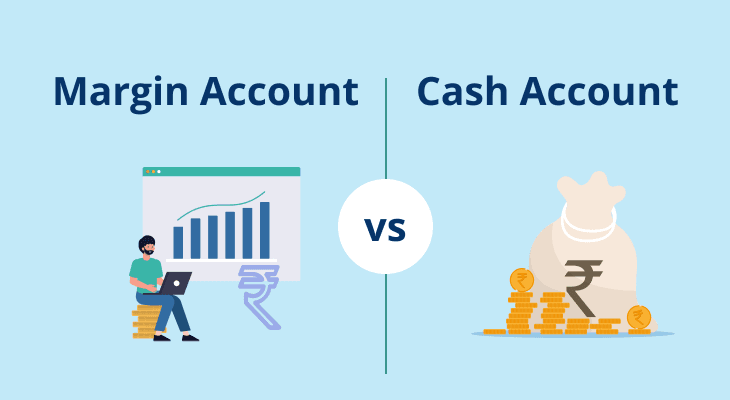
Table of content
- Margin Money Definition
- What is Margin Money?
- Margin and Margin Trading Overview
- Buying on Margin
- Minimum Margin
- Initial Margin
- Maintenance Margin and Margin Call
- Special Considerations
- Margin Restrictions
- Advantages and Disadvantages of Margin Borrowing
- Understanding Margin With An Example
- Uses of Margin
- Risks Associated With Margin Trading
- Key Takeaway
What is Margin Money?
Margin Money Definition
Margin, in the context of investing, represents the equity held within a brokerage account. The concept of "buying on margin" entails acquiring securities using funds borrowed from a broker, a practice specifically facilitated through a margin account rather than a standard brokerage account. Within a margin account, investors receive financial assistance from their broker, enabling them to acquire a larger volume of securities than their account balance would typically allow. In this article, we examine the intricacies of margin money, its significance, and its practical implications in stock market trading.
What is Margin Money?
To understand the meaning of Margin money in investing, it is the capital that an investor can acquire through a broker or exchange to participate in the securities market. In exchange for this financial support, the investor is required to make a deposit with the broker, serving as a security against potential risks. This deposit, referred to as Margin Money, represents the investor's commitment, while the broker covers the remaining value of the assets, utilising them as collateral. This mechanism empowers investors to engage in stock market activities even when their own funds fall short.
Margin is a financial metric that can be defined as the disparity between the sum borrowed from the brokerage firm and the total value of the assets held within the investor's investment account. Margins are applicable in various scenarios, including:
When purchasing stocks on margin with borrowed funds,
During intraday trading activities, whether buying long or selling short positions,
In the realm of trading futures contracts,
When engaging in the sale of options.
Margin and Margin Trading Overview
Margin is a downpayment made by an investor to a broker or lender. It is deposited in a separate Margin account dedicated to loans. This account is distinct from a regular brokerage account. In a Margin account, the brokerage firm lends money for buying securities.
Buying on Margin
"Buying on margin" involves purchasing securities by borrowing funds from a broker. The broker lends the value of the securities after the investor pays the margin. This allows investors to acquire more securities using their capital. A specific Margin account is required, different from a cash account used for regular trading.
Minimum Margin
Investors must consent to open a margin account. The minimum margin (maintenance margin) is the equity required in the margin account to hold it after purchasing securities.
Initial Margin
The borrower must deposit an initial margin with the broker before receiving funds. The initial margin is a specific percentage of the security's value.
Maintenance Margin and Margin Call
Maintenance margin is the minimum fund to be maintained in the account. Failure to meet maintenance balance may lead to the broker selling securities to cover losses. A margin call is a request to deposit funds to meet maintenance levels; failing to do so may lead to forced sales by the broker.
Special Considerations
Margin involves borrowing with associated costs.
Securities purchased with margin serve as collateral and can be sold if the debt isn't paid.
Margin is often used for short-term investments to avoid high interest.
Failure to meet maintenance margin affects the margin account.
Margin Restrictions
Not all securities can be bought on margin.
Brokerages typically disallow margin trading for IPOs, mutual funds, and penny stocks.
Different brokerages have varying restrictions on marginable stocks, requiring verification with the specific broker.
Advantages and Disadvantages of Margin Borrowing
Margin borrowing offers the benefit of leveraging investments, allowing borrowers to profit without committing the entire value of a security. This leverage can amplify gains. Additionally, as the security appreciates in value, it can further enhance returns. However, it's important to note that brokers or lenders have established safeguards to address potential losses.
Here are some key advantages and disadvantages of margin borrowing:
| Advantages | Disadvantages |
|---|---|
| Leverage can earn greater gains | Leverage can result in greater losses |
| Increases borrower's flexibility | Account fees and high interest charges |
| More flexibility, no regular EMIs | Margin calls may require additional payments |
| Potential for a self-fulfilling cycle | Forced liquidation can result in overall loss |
| Increased collateral value, enhanced borrowing power | - |
Understanding Margin With An Example
Suppose you initially deposit Rs. 10,000 into your margin account, allowing you to borrow an additional Rs 10,000 since you've deposited 50% of the purchase price. If you purchase stocks valued at Rs 5,000, you'll still have Rs 15,000 in buying power available within your account. You can cover this transaction with your own cash, not requiring the use of margin. It's when you invest in securities worth Rs 10,000 that you begin to utilise borrowed funds. It's essential to understand that the buying power of your margin account depends on the current value of the securities, which fluctuates daily, causing your buying power to change accordingly.
Uses of Margin
Business Accounting Margins
The income statement of a business calculates various accounting margins.
Gross Margin: It's the difference between Sales and the Cost of Goods.
Operating Margin: Calculated by subtracting the cost of goods and operating expenses from Sales.
Profit Margin: The difference between Sales and all incurred expenses, providing the net profit margin.
Profit margin is closely monitored by investors and stakeholders, offering comprehensive financial insight.
Margins In Mortgage Lending
Adjustable-rate mortgages maintain a fixed interest rate for a specific period, then adjust.
The new interest rate is determined by adding a margin to an established index.
For instance, with a 4% mortgage margin and a 5% index rate, the mortgage's interest rate becomes 9%.
The index rate can change over time, impacting mortgage interest rates.
Risks Associated With Margin Trading
Engaging in margin trading means purchasing securities through a broker-provided loan. However, it carries inherent risks, as with any investment. If the securities involved experience losses, the investor can incur losses exceeding their initial margin deposit. In such scenarios, they might be required to inject additional funds into the margin account or face forced sales of securities to cover the depreciation in the invested securities' value.
Key Takeaway
Margin trading provides investors with the ability to acquire a larger volume of securities than their available funds allow. This offers the potential for amplified profits or losses. Investing a portion of the security's total value on margin can lead to increased gains, but a corresponding risk of losses exists. To navigate margin trading successfully, investors must employ a well-thought-out strategy, focusing on short-term investments and making prudent choices when selecting securities.


